Hello there, curious minds! Are you ready to embark on an exciting journey through the world of fruits? Welcome to our delightful blog post, where we’ll explore A To Z Fruit Names, from apples to zucchinis (just kidding, zucchinis are vegetables!).
Fruits are not just yummy treats; they are nature’s way of sharing its sweetness with us. From the juicy oranges that wake you up in the morning to the crispy apples that accompany your lunch, fruits are all around us, offering flavours as diverse as the colors of the rainbow.
So, whether you’re a fruit enthusiast looking to expand your fruity knowledge or just someone who enjoys a delicious snack, join us as we dive headfirst into the world of A To Z Fruit Names. Get ready to explore, learn, and savour the sweetness of nature’s finest creations!
A To Z Fruit Names English And Hindi
| Serial Number | Picture | English Name | Hindi Name |
| 1 |  | Apple | सेब (Seb) |
| 2 |  | Banana | केला (Kela) |
| 3 | 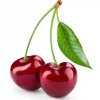 | Cherry | चेरी (Cheri) |
| 4 |  | Dragon Fruit | ड्रैगन फ्रूट (Dragon Phal) |
| 5 |  | Elderberry | एल्डरबेरी (Elderberry) |
| 6 | 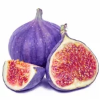 | Fig | अंजीर (Anjeer) |
| 7 | 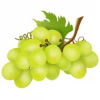 | Grape | अंगूर (Angur) |
| 8 |  | Honeydew Melon | हनीड्यू मेलन (Honeydew Tarbuja) |
| 9 |  | Indian Gooseberry | आमला (Amla) |
| 10 | 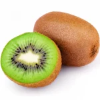 | Kiwi | कीवी (Kiwi) |
| 11 |  | Lemon | नींबू (Nimbu) |
| 12 |  | Mango | आम (Aam) |
| 13 |  | Nectarine | नेक्टरीन (Nectarine) |
| 14 |  | Orange | संतरा (Santra) |
| 15 | 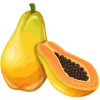 | Papaya | पपीता (Papita) |
| 16 | 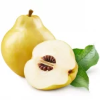 | Quince | बही (Bahī) |
| 17 |  | Raspberry | रैस्बेरी (Raspberry) |
| 18 |  | Strawberry | स्ट्रॉबेरी (Strawberry) |
| 19 | 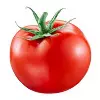 | Tomato | टमाटर (Tamatar) |
| 20 |  | Ugli Fruit | अद्वितीय फल (Advitiya Phala) |
| 21 |  | Watermelon | तरबूज (Tarbuja) |
| 22 |  | Xigua | जीवा (Jiva) |
| 23 |  | Yellow Passion Fruit | पैला पैशन फ्रूट (Paila Passion Phal) |
| 24 |  | Zucchini | झीनी (Jheeni) |
| 25 | 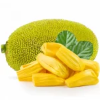 | Jackfruit | कट्टहल (Kattahala) |
Fruit Variety
The table offers fruits from A to Z, showcasing well-known and less common options. This diversity is a valuable aspect for several reasons:
- Cultural and Regional Diversity: Different fruits are grown and consumed in various parts of the world. The table includes fruits popular in different regions, reflecting fruit consumption’s cultural and geographical diversity.
- Seasonal Availability: Fruits have different growing seasons, and some are only available during specific times of the year. By including a wide range of fruits, the table highlights seasonal variations and the importance of enjoying fruits when they are freshest and most flavourful.
- Nutritional Diversity: Various fruits offer different nutritional benefits. For example, citrus fruits like oranges are known for their high vitamin C content, while bananas provide potassium. The table’s variety allows individuals to choose fruits that align with their nutritional needs and preferences.
- Culinary Exploration: Diverse fruits open up opportunities for culinary exploration. People can experiment with new recipes, flavours, and textures, enriching their culinary experiences. Trying less common fruits can be an adventurous and enjoyable experience.
- Language Learning: For individuals learning English or Hindi, having a variety of fruit names at their disposal can enhance their language skills. It allows them to practice vocabulary in a meaningful context and learn about different linguistic nuances.
- Cultural Appreciation: Some fruits hold cultural significance or are integral to specific traditions and cuisines. The table’s diversity encourages cultural appreciation by introducing users to fruits associated with various cultures and celebrations.
- Health Benefits: Different fruits offer different health benefits due to their unique nutritional profiles. Having a variety of fruits to choose from can help individuals maintain a balanced and nutritious diet.
Fruit Availability
The table provides valuable information about the availability of different fruits, considering their seasonal nature and whether they are accessible year-round. Here’s how it highlights this aspect:
- Seasonal Variations: Many fruits have specific growing seasons when they are freshest and most abundant. For instance, fruits like strawberries and cherries are typically in season during the spring and early summer, while apples and pears are more commonly available in the fall. The table helps users identify when certain fruits will likely be at their peak and most flavorful.
- Year-Round Choices: While some fruits have well-defined seasons, others are available year-round due to modern agricultural practices and global trade. Examples include bananas, oranges, and lemons. The table indicates these year-round options, indicating that individuals can enjoy these fruits regardless of the time of year.
- Importance of Seasonality: Understanding the seasonality of fruits is important for culinary enthusiasts and those looking to make sustainable and environmentally conscious food choices. Choosing fruits that are in season locally can reduce the environmental impact associated with long-distance transportation.
- Culinary Planning: For chefs, home cooks, and meal planners, knowing the seasonal availability of fruits is crucial for menu planning. It allows them to create dishes that align with the freshest and most cost-effective ingredients.
- Health and Nutrition: Seasonal fruits often offer specific health benefits due to their nutritional content. For example, citrus fruits like oranges are rich in vitamin C and are often consumed during the winter to boost immunity. By highlighting seasonal options, the table can assist individuals in making nutritious choices.
- Fruit Preservation: Understanding the seasonality of fruits can also lead to knowledge about various methods of fruit preservation, such as canning, drying, or making jams and jellies. These techniques allow people to enjoy their favourite fruits even when out of season.
Fruit Diversity
The table is a testament to the incredible diversity of fruits globally. Here’s how it showcases this diversity:
- Global Representation: The table includes fruits from various continents and regions, from the Americas to Asia, Europe, and beyond. This diverse representation reflects the global reach of fruit cultivation and consumption.
- Cultural Significance: Many fruits are deeply rooted in the cultures and traditions of specific regions. For example, mangoes hold immense cultural importance in South Asia, while apples are associated with European folklore. The table’s inclusion of such fruits highlights their cultural significance and the stories and customs tied to them.
- Flavour Profiles: Fruits from different parts of the world often exhibit distinct flavour profiles. Tropical fruits like pineapples and mangoes are known for their sweetness, while European fruits like apples and pears offer a crisp and refreshing taste. Users can explore the unique flavours of these fruits through the table.
- Nutritional Variety: Fruits vary not only in taste but also in their nutritional content. For instance, guavas are rich in vitamin C, while avocados provide healthy fats. The table’s diversity encourages individuals to explore various nutrients through different fruits.
- Culinary Exploration: A diverse array of fruits invites culinary exploration. People can try to prepare dishes and recipes from different parts of the world, expanding their culinary horizons and embracing global flavours.
- Biodiversity: Fruit diversity also contributes to the preservation of biodiversity. Cultivating and consuming a wide range of fruits, we help protect and conserve different fruit species and their ecosystems.
- Educational Value: The table is an educational tool, offering a window into the world’s fruit diversity. It can spark curiosity and encourage individuals, including students, to learn more about various fruits’ origins, growth conditions, and uses.
- Appreciation of Nature: Understanding and appreciating fruit diversity can foster a greater appreciation for the natural world. It showcases the incredible variety and beauty that nature has to offer.
Conclusion
In this blog post, we’ve taken you through the delicious world of A To Z Fruit Names. We’ve explored various fruits and learned their names from apples to zucchinis. Remember, knowing these A To Z Fruit Names expands your vocabulary and helps you make healthy choices.
Fruits are not just tasty; they are full of vitamins and goodness for our bodies. Whether it’s the crunchy apple you enjoy for a snack or the juicy watermelon you savour on a hot day, each fruit has something special.
So, the next time you visit the grocery store or see a fruit you haven’t tried, don’t be afraid to explore. Learning about A To Z Fruit Names can be an exciting adventure that makes your journey through the world of fruits even more enjoyable.
What fruits begin with the letter A?
Apple, Apricot, Avocado
Can I get a list of fruits?
Certainly! Here’s a list of some common fruits:
Apple, Banana, Orange, Mango, Grape, Strawberry, Pineapple, Watermelon, Kiwi, Lemon, Tomato, Cucumber, Eggplant, Zucchini, Carrot, Potato, Spinach, Broccoli, Cauliflower, Lettuce, Cabbage, Bell Pepper, Pumpkin, Onion, Garlic, Beetroot, Lychee, Pomegranate, Jackfruit, Fig, Custard Apple, Sapota (Chikoo).
Which fruit starts with the letter Z?
Zucchini is a vegetable that starts with the letter Z. There are very few fruits that start with Z, and Zucchini is often mistaken for a fruit, but it’s botanically a vegetable.
What fruit has 12 letters?
Raspberry is a fruit with 12 letters in its name.
What fruit starts with the letter E?
Examples of fruits that start with the letter E include Elderberry and Eggplant (though botanically classified as a berry).
What fruit starts with the letter F?
Examples of fruits that start with the letter F include Fig and Feijoa.
What fruit starts with M?
Examples of fruits that start with the letter M include Mango, Melon, and Mulberry.
What fruit starts with the letter J?
Examples of fruits that start with the letter J include Jackfruit, Jujube, and Juniper Berry.
What fruit starts with G?
Examples of fruits that start with the letter G include Grape, Guava, and Gooseberry.
Is there any fruit from the letter N?
Yes, there are fruits that start with the letter N, such as Nectarine, Nance, and Nashi Pear.
What fruits and vegetables start with K?
Fruits: Kiwi, Kumquat
Vegetables: Kale, Kohlrabi
What is a food that starts with L?
Some foods that start with the letter L include Lemon, Lettuce, and Lamb.
What food starts with Y?
Some foods that start with the letter Y include Yogurt, Yam, and Yuzu (a citrus fruit).
What vegetable starts with D?
Some vegetables that start with the letter D include Daikon (radish), Dill (herb), and Dandelion greens.

Hello! I’m Yash Pandya, a dedicated Horticulture Manager at Nayara Refinery. With a passion for creating breathtaking green spaces, I manage a lush landscape and a thriving orchard of 90,000 mango trees.
Expertise: 🌿 Horticulture Management: I plan and maintain gardens, ensuring tranquility and beauty. 🌳 Mango Orchard Expert: I optimize mango yields and health using advanced techniques. 🌺 Landscape Design: My designs harmonize aesthetics with eco-friendly practices. 🌍 Collaboration & Leadership: I foster teamwork, empowering my team to excel.
Experience:
Horticulture Manager at Nayara Refinery.
Student Placement Coordinator: Facilitated student-company connections.
Research And Development Intern: Worked on organic farming practices.
Let’s connect and continue cultivating a greener, more beautiful world! 🌱 #HorticultureManager #LandscapeDesign #SustainabilityInAgriculture


